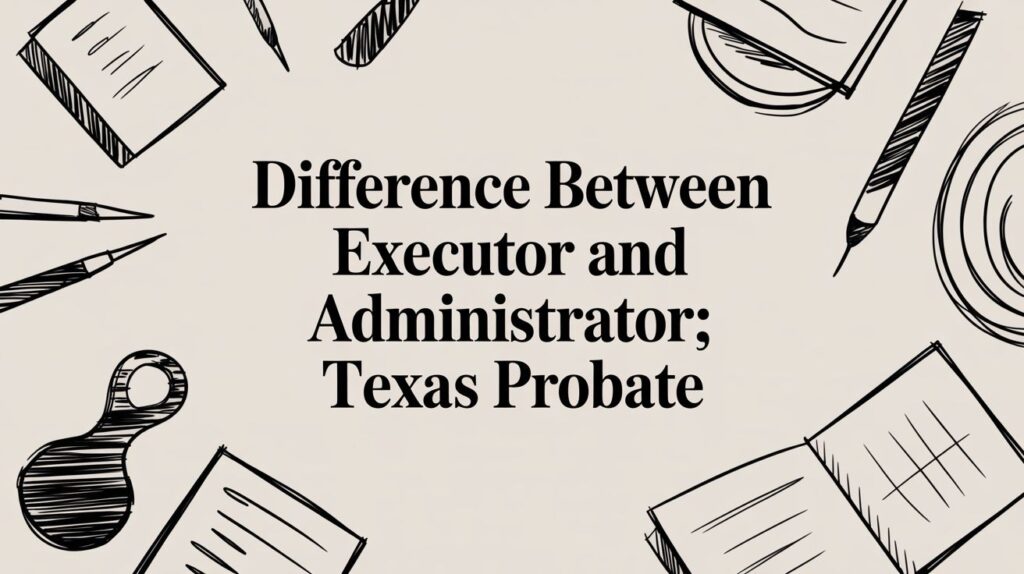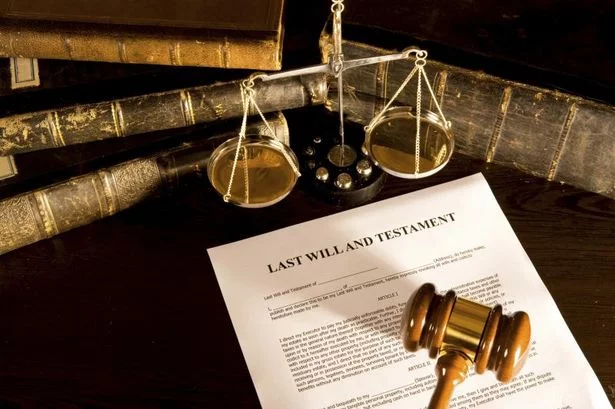The death of a loved one is often accompanied by emotional and logistical challenges. Among these, navigating the probate process can be particularly complex—especially when real estate tied to a loan is part of the estate. Real estate used as collateral for loans introduces unique complications into Texas probate, requiring a thorough understanding of state-specific laws, financial obligations, and the potential for disputes among heirs. This guide explores the intricacies of Texas probate as it applies to real estate collateral, offering detailed insights, actionable steps, and strategies for managing this process effectively.
Understanding Probate in Texas
Probate is a legal process that occurs after someone dies. It involves verifying the validity of their will (if one exists), inventorying their assets, paying off debts and taxes, and distributing the remaining assets to heirs or beneficiaries. In Texas, the probate process is often considered more streamlined than in other states due to the availability of independent administration, which minimizes court involvement.

However, when real estate that serves as collateral is involved, probate becomes more intricate. This is because the property not only represents an asset but also a liability tied to the loan it secures.
Key Terms and Concepts
- Decedent: The person who has passed away.
- Estate: All the assets and liabilities of the decedent.
- Collateral: Property pledged as security for a loan.
- Executor: The person named in the will to manage the probate process.
- Administrator: A court-appointed individual managing the estate if there is no will.
- Heir: Individuals entitled to inherit property under state laws if there’s no will.
- Lienholder: The lender with a legal claim on the collateral property.
Real Estate as Collateral: Unique Challenges in Probate
Real estate used as collateral presents a dual challenge in probate proceedings: it must be treated as an asset while simultaneously addressing the debt it secures. Mismanagement can lead to financial losses for the estate, legal disputes among heirs, or even foreclosure.
- Asset Management: Real estate can represent a significant portion of an estate’s value, making its proper handling critical for beneficiaries.
- Debt Resolution: The lienholder’s rights must be respected, as the property serves as security for the loan.

Navigating these dual responsibilities requires a careful balance of legal, financial, and interpersonal considerations.
Steps in Managing Probate for Real Estate Collateral
To effectively manage Texas probate involving real estate collateral, understanding the steps and stakeholders involved is essential.
1. Identifying the Type of Probate Administration
Texas offers several types of probate administration, and selecting the appropriate one is critical for efficiency:
- Independent Administration: The most common and efficient form, it grants the executor significant autonomy in managing the estate without frequent court oversight.
- Dependent Administration: Involves court supervision for most actions, suitable for estates with disputes or unclear directives.
- Muniment of Title: Used to transfer property directly without formal administration when there are no debts outside of liens tied to real estate.
- Small Estate Affidavit: Reserved for estates valued under $75,000 (excluding homesteads).
Each option has unique requirements and implications, particularly when real estate collateral is involved.
2. Appointing an Executor or Administrator
The individual responsible for managing the estate plays a pivotal role in navigating probate. If a will exists, the executor named in it will take charge. If no will exists, the court appoints an administrator.
- Collecting and inventorying all estate assets.
- Notifying creditors and addressing claims.
- Ensuring the equitable distribution of assets as per the will or Texas intestacy laws.
3. Inventorying Estate Assets and Liabilities
A comprehensive inventory of the estate is crucial for transparency and legal compliance. When real estate collateral is involved, specific attention should be paid to:
- Property Valuation: Obtain a professional appraisal to establish the market value.
- Lien and Loan Documentation: Gather all relevant documents, including the loan agreement, payment history, and terms of the lien.

4. Creditor Notifications and Debt Settlements
Texas probate law mandates that executors notify creditors, including those holding liens on real estate. This step involves:
- Publishing a general notice to creditors in a local newspaper.
- Sending direct notices to known creditors, such as mortgage lenders or banks.
Creditors typically have four months to file claims against the estate. Addressing these claims promptly is essential to avoid foreclosure or legal disputes.
5. Managing Real Estate Collateral
The executor must decide how to handle the property tied to the loan. Common options include:
- Paying Off the Loan: If the estate has sufficient liquid assets, this is the simplest approach, ensuring the property remains in the estate.
- Refinancing: Heirs may choose to refinance the loan in their names if they wish to retain the property.
- Selling the Property: Proceeds from the sale can be used to settle the loan and other debts.
6. Resolving Disputes Among Beneficiaries
Heirs often have differing opinions about what to do with inherited property, particularly when it carries debt. To manage such disputes:
- Engage in open and transparent communication from the outset.
- Utilize mediation services to reach a consensus without resorting to litigation.
- Seek court intervention if disputes remain unresolved.
Legal Considerations in Texas
Homestead Protections
Texas provides strong homestead protections, which can shield certain properties from creditors. However, these protections have limits, especially if the property was explicitly used as collateral.
Rights of Survivorship
If the property is jointly owned with a right of survivorship, it may bypass probate entirely and transfer directly to the co-owner. This simplifies the process but doesn’t eliminate the loan obligation.
Marital Property
Texas is a community property state, meaning that property acquired during the marriage is generally considered jointly owned. This can affect how the property is treated in probate.
Liens and Foreclosures
The lender’s lien remains on the property even during probate. If loan payments are not maintained, the lender may initiate foreclosure proceedings.
Navigating Disputes Among Heirs or Beneficiaries
Disputes among heirs can significantly complicate the process, especially when they disagree about selling or retaining the property. To prevent or resolve conflicts:
- Communicate Early: Discuss options with all involved parties as soon as possible.
- Mediation: Consider hiring a neutral third party to mediate disputes.
- Court Intervention: If necessary, the court can resolve disputes or approve actions such as selling the property.
Practical Tips for Executors and Administrators
- Keep Detailed Records: Document all transactions, communications, and actions taken during probate.
- Hire Professionals: Work with an attorney experienced in Texas probate law, and consider hiring a financial advisor or real estate agent.
- Understand Tax Implications: Selling real estate may trigger capital gains taxes, which need to be addressed.
- Maintain the Property: Ensure the property is insured and well-maintained throughout the probate process.
Avoiding Probate: Proactive Strategies
To minimize the complexities of probate in the future, consider these strategies:
- Transfer-on-Death Deed: Allows property to pass directly to a beneficiary upon death, bypassing probate.
- Living Trust: Places assets, including real estate, in a trust managed outside the probate process.
- Joint Ownership: Structuring property ownership with survivorship rights can simplify transfer.
- Life Insurance: Use policies to provide liquidity for paying off debts without selling the property.
Conclusion
Managing Texas probate for real estate used as collateral in loans is a complex but navigable process with proper planning, legal guidance, and financial management. Executors and administrators must balance the needs of beneficiaries, the rights of creditors, and the constraints of Texas probate law. By understanding the nuances of the probate process, addressing debt obligations effectively, and fostering clear communication among stakeholders, you can honor the decedent’s wishes while minimizing stress and potential conflicts.
Whether you’re a beneficiary, executor, or legal professional, this comprehensive approach ensures a smoother and more equitable probate process.








